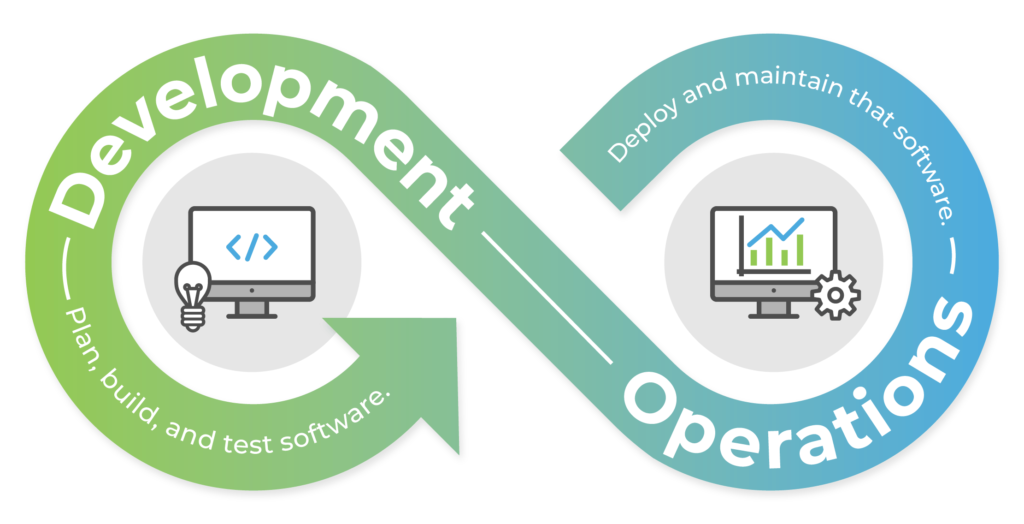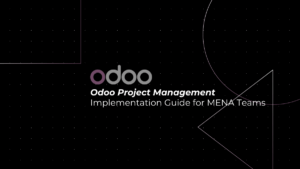In today’s fast-paced digital landscape, the need for speed and efficiency in software development has never been more critical. DevOps, a set of practices that combines software development (Dev) and IT operations (Ops), has emerged as a pivotal methodology to meet this demand. This approach fosters a culture of collaboration and rapid delivery, fundamentally transforming how development and operations teams work together to achieve business goals. Let’s delve into the core of DevOps, emphasizing the importance of collaboration and the elimination of barriers to speed up development cycles.
Table of Contents
ToggleIntroduction to DevOps
DevOps, short for Development and Operations, is a set of practices and cultural philosophies aimed at improving collaboration and efficiency between software development and IT operations teams. It emerged as a response to the traditional silos and bottlenecks that often hindered the delivery of software products. By breaking down barriers between development, quality assurance, and operations, DevOps aims to streamline processes, accelerate development cycles, and enhance the overall quality of software delivery.
Importance of Collaboration Between Development and Operations Teams
In traditional software development environments, development and operations teams often operate in isolation. Developers focus on writing code and adding new features, while operations teams deal with deployment, uptime, and infrastructure management. This separation can lead to a variety of challenges in software delivery, including:
- Misaligned Objectives: Dev teams aim to deliver features rapidly, while Ops teams prioritize stability and performance. Without adequate collaboration, these divergent goals can lead to conflicts and compromises that affect the final product’s quality and reliability.
- Delayed Feedback Cycles: In siloed environments, operations teams might encounter issues in the production environment that the development team could have mitigated earlier. The lack of early and continuous feedback results in slower issue resolution and potentially impacts the end-user experience.
DevOps bridges these gaps by fostering a culture where both teams collaborate closely from the inception of a project to its deployment and beyond. This collaborative approach is built on several core practices:
- Shared Responsibility: DevOps encourages both teams to take joint responsibility for the software’s success, blurring the traditional roles and fostering a sense of ownership across the entire lifecycle. This shared responsibility leads to higher quality software, as both teams work together to meet common goals.
- Enhanced Communication and Collaboration: Regular meetings, shared tools, and common platforms promote ongoing communication between Dev and Ops. This constant interaction helps in identifying and addressing potential bottlenecks early, facilitating smoother and faster development cycles.
- Continuous Integration and Continuous Deployment (CI/CD): DevOps leverages CI/CD pipelines to automate the testing and deployment of code. This not only speeds up the delivery process but also ensures that any code change is immediately tested and feedback is quickly relayed back to the development team, enabling rapid iterations.
The benefits of breaking down the traditional silos are profound:
- Faster Problem Resolution: With both teams working together, issues can be identified and resolved much faster. This collaboration results in reduced downtime and a better end-user experience.
- Improved Quality: Continuous testing and feedback loops ensure that bugs are caught and fixed early in the development cycle, leading to higher quality software releases.
- Greater Agility in Responding to Change: The collaborative nature of DevOps makes it easier for businesses to respond to market changes or new customer requirements. With development and operations teams aligned, organizations can quickly pivot or adapt their software in response to external pressures or opportunities.

Eliminating Barriers to Speed Up Development Cycles
DevOps revolutionizes the software development process by removing bottlenecks and streamlining workflows, thereby accelerating development cycles. This acceleration is achieved through a combination of practices and techniques that enhance efficiency and reduce the reliance on manual interventions.
Automation: The Cornerstone of DevOps Efficiency
Automation stands at the core of DevOps, touching every phase of the software development lifecycle, from code integration to testing, deployment, and monitoring. By automating repetitive tasks, DevOps significantly reduces the potential for human error and frees up developers and operations teams to focus on more strategic tasks. For instance, continuous integration (CI) and continuous delivery (CD) pipelines automatically test code changes and deploy them to production environments, ensuring that software can be released reliably at any time.
Version Control: Enabling Collaboration and Traceability
Version control systems like Git play a crucial role in DevOps by allowing teams to collaborate on code changes efficiently. These systems track every modification, enabling teams to revert to previous versions if issues arise and ensuring that all team members are working on the latest version of the code. This traceability is crucial for maintaining code quality and accelerates development by reducing conflicts and confusion over code changes.
Infrastructure as Code (IaC): Streamlining Environment Management
Infrastructure as Code (IaC) is another DevOps practice that transforms infrastructure setup and management. By treating infrastructure setup and configurations as code, IaC enables teams to automate the provisioning and management of infrastructure, ensuring consistency across development, testing, and production environments. This consistency eliminates the “it works on my machine” problem, streamlines the development process, and significantly reduces the time required to release new features or updates.
Reducing Manual Interventions and Minimizing Errors
The emphasis on automation within DevOps directly contributes to minimizing manual interventions and the associated risk of errors. Automated testing, for example, ensures that bugs are detected and addressed early in the development process, enhancing software quality and reducing the need for time-consuming manual testing processes.
Enhancing the Overall Speed of Delivering Software
The cumulative effect of DevOps practices like automation, version control, and IaC is a dramatic increase in the speed of software delivery. Retail companies, for instance, can deploy updates or new features to their e-commerce platforms swiftly and reliably, responding quickly to consumer demands or market trends. A telecommunications company can automate the deployment of new services, reducing time-to-market from weeks to days, thereby gaining a competitive edge.
Microservices Architecture
Adopting a microservices architecture is another DevOps practice that contributes to faster development cycles. By breaking down applications into smaller, independently deployable services, teams can work on different parts of the application simultaneously, reducing dependencies and accelerating time-to-market.
Agile Methodology
DevOps integrates well with Agile methodologies, focusing on iterative development, flexibility, and customer feedback. This synergy enables teams to adapt quickly to changes, prioritize tasks effectively, and deliver functional software in shorter cycles, responding faster to market demands.
Enhanced Tooling
DevOps introduces advanced tooling for monitoring, logging, and diagnostics, allowing teams to identify and address issues in real-time. This immediate responsiveness not only speeds up the development process but also ensures higher quality and performance of the final product.
To wrap it all up, DevOps is more than just a set of practices; it’s a cultural shift that bridges the gap between development and operations, fostering collaboration, and accelerating delivery cycles. By breaking down traditional silos, leveraging automation, and embracing agile principles, DevOps enables businesses to innovate faster, respond to market changes more swiftly, and deliver value to customers continuously. As organizations navigate the complexities of the digital age, DevOps stands as a critical strategy for achieving operational excellence and competitive advantage.
As you embark on your DevOps journey, remember that successful implementation requires expertise and collaboration. At PyramidBITS, we’ve supported clients like UAE BARQ in adopting DevOps practices to streamline their development processes and achieve greater agility.





